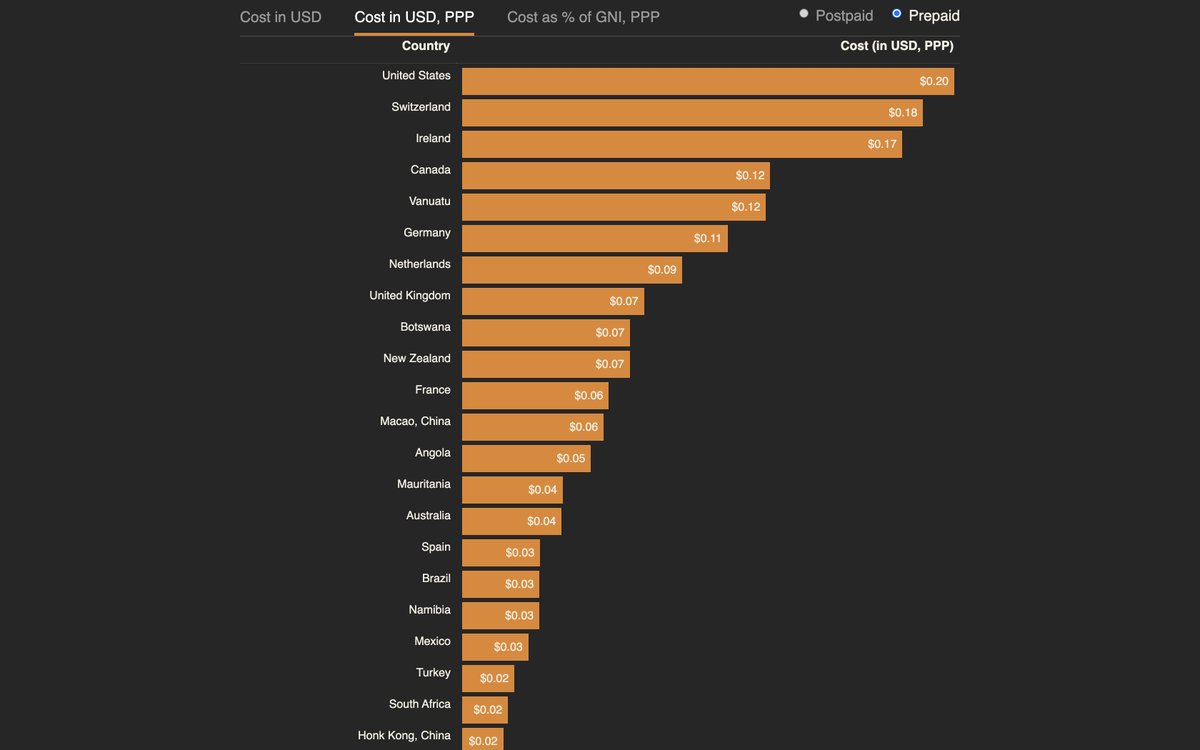
Friendly reminder for everyone that network payload a.k.a. page size is *the* most impactful metric on your Lighthouse report.
Because of page size, a child in the U.S. – or anywhere – may have to choose between eating lunch or doing homework.
Here is why… 🧵 (thread)
Because of page size, a child in the U.S. – or anywhere – may have to choose between eating lunch or doing homework.
Here is why… 🧵 (thread)
https://twitter.com/scottjehl/status/1357720523069865986
The median website in 2020 weighs 2.4MB.
This translates into 20¢ per page load on a cheap U.S. pre-paid plan. Cheap – that’s a best case scenario.
Btw, does it surprise you that countries like U.S., Switzerland, Ireland, or Canada lead that cost graph?
whatdoesmysitecost.com
This translates into 20¢ per page load on a cheap U.S. pre-paid plan. Cheap – that’s a best case scenario.
Btw, does it surprise you that countries like U.S., Switzerland, Ireland, or Canada lead that cost graph?
whatdoesmysitecost.com

Switch to the ‘Cost as % of GNI’ tab and the graph almost literally flips over. Those 20¢ per page on a U.S. pre-paid plan equate to 0.13% of a person’s daily income. Check out the other countries, too.
0.13% may sound little, but back to that child and their homework…
0.13% may sound little, but back to that child and their homework…

Weekly grocery expenses of a U.S. household with children under 18 averaged $160 in 2020.
That’s about $23 per day to feed a family. 👀
(Source: statista.com/statistics/240…)
That’s about $23 per day to feed a family. 👀
(Source: statista.com/statistics/240…)
For sake of example, let’s assume a household of 3, including 1 child under 18, who eat 3 meals a day.
Let’s also ignore price differences in those meals as well as differences in individual eating habits.
$23 daily grocery expenses
÷ 3 humans
÷ 3 meals
= $2.55/person/meal/day
Let’s also ignore price differences in those meals as well as differences in individual eating habits.
$23 daily grocery expenses
÷ 3 humans
÷ 3 meals
= $2.55/person/meal/day
So on average, a child on a prepaid plan in the U.S. can eat lunch, or spend the equal amount of $$ visiting 12 web pages to do their homework.
👉 Page size – not a Core Web Vital according to Google, but still your most impactful #webperf metric.
web.dev/total-byte-wei…
👉 Page size – not a Core Web Vital according to Google, but still your most impactful #webperf metric.
web.dev/total-byte-wei…
I wrote this up as a post and included some additional perspective. caspar.blog/web-vitals/
• • •
Missing some Tweet in this thread? You can try to
force a refresh



